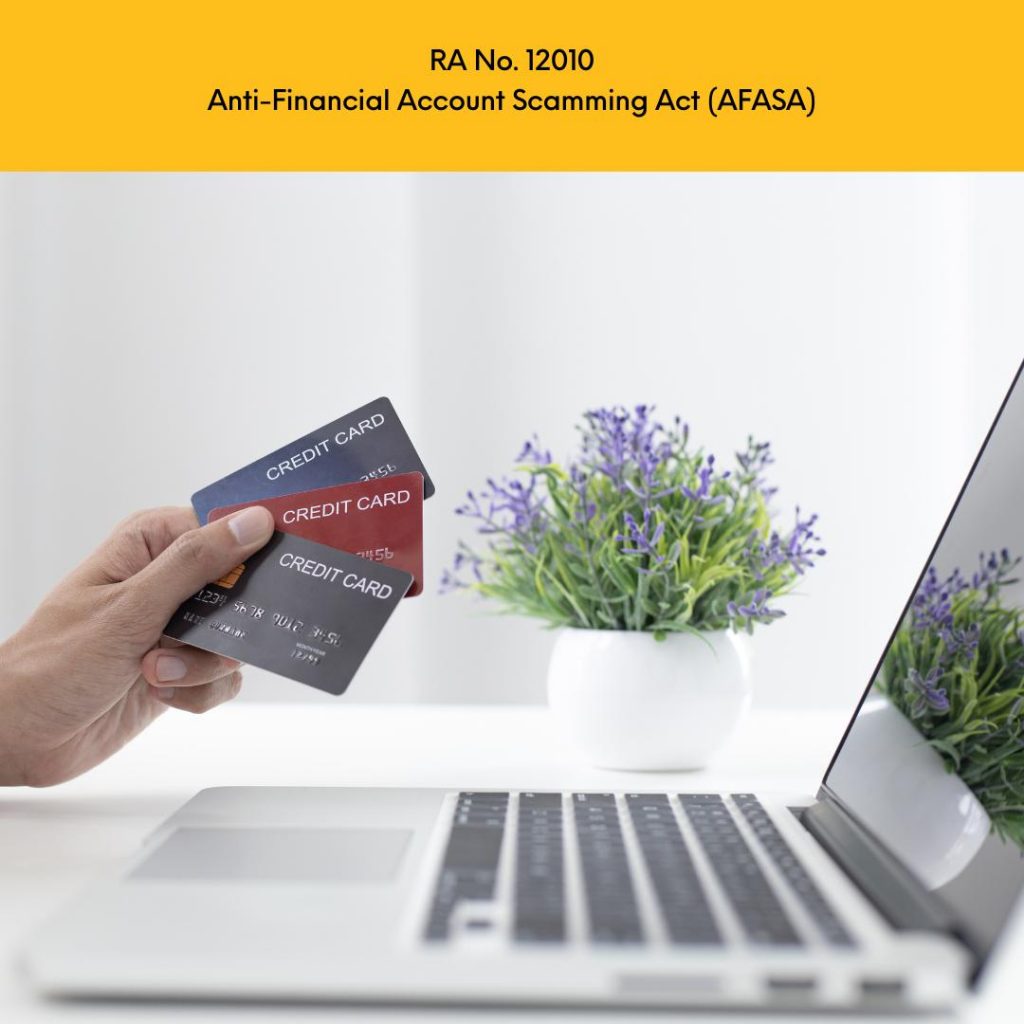
Published 7 April 2025, The Daily Tribune
Our previous article on Republic Act No. 12010, also known as the Anti-Financial Account Scamming Act (AFASA), garnered significant interest, especially regarding how the law supports consumers in cases of scam-related transactions. This follow-up highlights the key responsibilities now assigned to financial institutions under the law, particularly in terms of freezing suspicious accounts, coordinating with other banks to prevent fraud, and ultimately assisting customers in recovering potentially lost funds.
Authority to freeze funds
Under Section 7 of AFASA, banks and financial institutions are authorized to impose a temporary hold on funds that are the subject of a disputed transaction. This can be done without a court order, provided that the freeze is reported to the Bangko Sentral ng Pilipinas. The hold can last for up to 30 calendar days. This provision gives institutions the legal basis to immediately restrict access to funds that may be linked to fraud while a review is ongoing or until further legal action is taken.
Section 8 of the law requires financial institutions to carry out a verification process when a transaction is disputed. This process must involve both the account holder and any other financial institutions connected to the transfer. This is especially important when funds have already moved across banks or e-wallet platforms. AFASA reinforces the duty of institutions to coordinate and not act in isolation when handling fraud complaints.
Required internal controls
Section 6 of AFASA outlines the internal control measures that financial institutions are expected to implement. These include systems for fraud detection, risk management, customer authentication, and incident response. The law requires that these systems be proportionate to the institution’s operational scale and complexity. If a bank fails to implement adequate controls and this results in a successful fraudulent transaction, the institution may be held liable for restitution.
Section 5 further supports institutional responsibility by requiring the adoption of standard account security protocols. This includes verifying the identity of account holders through Know Your Customer procedures and securing account access through mechanisms such as multi-factor authentication. These requirements are aimed at preventing unauthorized access and protecting customers from account manipulation or fraudulent use.
AFASA also emphasizes the need for coordinated response across the financial system. Sections 6 and 8 work in tandem to ensure that banks do not manage fraud incidents in isolation. When funds move across multiple financial institutions, each party involved is required to cooperate in the resolution process. This includes sharing information, verifying transaction histories, and participating in a unified response to reported scams.
Republic Act No. 12010 provides financial institutions with clear guidelines and mechanisms for detecting, preventing, and responding to fraud. These include mandatory procedures for freezing suspicious accounts, reporting incidents promptly and coordinating with other banks to prevent further fraud. Failure to comply with these obligations not only heightens legal risks but also exposes institutions to financial liability and potential reputational risk.
In Part 2 of this series, we will explain the process that victims can follow to request an account hold and outline the exact steps banks are required to take under AFASA once a scam report is received.
For more of Dean Nilo Divina’s legal tidbits, please visit www.divinalaw.com. For comments and questions, please send an email to cad@divinalaw.com.

